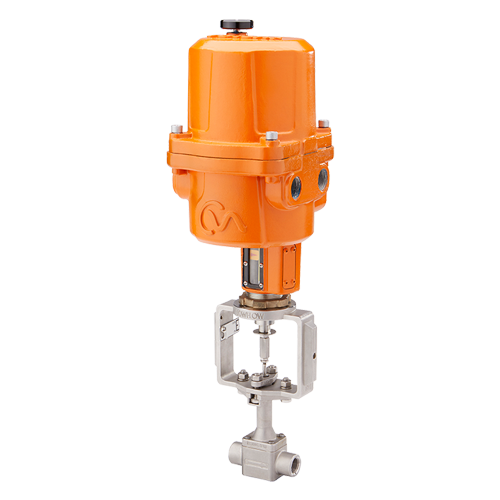Choosing the Right Control Valves: A Guide to Optimum System Efficiency
Choosing the Right Control Valves: A Guide to Optimum System Efficiency
Blog Article

Maximize Energy Cost Savings and Comfort With Advanced Building Automation Controls
In the world of modern-day design and facility monitoring, the combination of sophisticated structure automation manages stands as a crucial innovation. By harnessing the power of automation, buildings can adjust, react, and develop in methods that were when unimaginable.
Power Efficiency Benefits
Energy effectiveness advantages can dramatically minimize energy intake and functional costs in structures. Energy-efficient systems, such as innovative building automation controls, can optimize the usage of sources like air conditioning, heating, and lights, leading to lower power costs over time.
Additionally, boosted power efficiency can extend the life-span of structure tools and systems. By running much more successfully, a/c systems, lighting fixture, and other building parts experience less damage, causing reduced maintenance and replacement costs. In addition, energy-efficient buildings commonly command greater building values and rental prices, offering lasting monetary advantages to owners.
Furthermore, power efficiency can enhance occupant comfort and efficiency. Correctly controlled interior environments with optimum lighting and thermal problems develop an even more conducive and pleasurable office, leading to improved employee fulfillment and performance. Generally, the power performance benefits linked with innovative structure automation controls are diverse, incorporating cost savings, ecological stewardship, and occupant wellness.
Improved Convenience Control
Enhancing convenience control in structure environments calls for a sophisticated assimilation of sophisticated automation systems for optimal resident well-being. By making use of sophisticated structure automation controls, facilities can customize the interior environment to fulfill the certain needs and choices of residents. These systems allow accurate law of temperature, lighting, and air flow, developing a productive and comfy atmosphere. Owner satisfaction and efficiency are closely connected to thermal convenience, making it crucial to have systems in place that can adapt to altering problems in real-time.
Boosted convenience control exceeds fundamental temperature level modifications. It includes attributes such as personalized settings, occupancy sensing units, and all-natural light use to produce a responsive and vibrant atmosphere. By incorporating these sophisticated controls, buildings can not just enhance comfort however also boost energy performance by optimizing system procedures based on actual occupancy and usage patterns. Inevitably, focusing on passenger convenience through innovative automation systems brings about a much more delightful and much healthier indoor setting.
Operational Effectiveness Improvements

In addition, the implementation of real-time tracking and analytics tools enables structure operators to determine power inadequacies and functional abnormalities without delay. By find continuously checking power use patterns and system efficiency metrics, adjustments can be made in real-time to enhance power intake and guarantee peak operational efficiency. control valves. Additionally, including need action techniques into building automation controls can better improve operational performance by dynamically adjusting energy use based on grid problems and rates signals
Indoor Climate Optimization
Reliable interior climate optimization is a basic facet of structure automation controls, guaranteeing residents' comfort and well-being while taking full advantage of energy savings. By using sophisticated sensing units and controls, building automation systems can constantly change and keep track of temperature level, humidity degrees, air high quality, and air flow to create an ideal indoor environment. Keeping comfortable and constant problems not only improves resident fulfillment but likewise increases productivity and total health.
Indoor environment optimization also plays a crucial function in energy efficiency. By fine-tuning air conditioning, home heating, and air flow systems based upon real-time data and occupancy patterns, constructing automation controls can significantly minimize power usage - control valves. For example, applying methods such as demand-controlled ventilation and thermal zoning can help reduce energy waste while guaranteeing that each location of the building receives the essential conditioning.

Lasting Environment Development
Structure automation manages not just enhance indoor climate conditions for energy performance and passenger comfort however likewise lay the foundation for creating a sustainable environment through calculated administration of sources and systems. By integrating advanced building automation modern technologies, such as sensors, actuators, and intelligent software program, centers can keep track of and readjust energy usage in real-time to decrease waste and decrease their carbon impact. These systems make it possible for anticipating maintenance, determining possible concerns prior to they intensify and maximizing equipment efficiency to boost longevity and efficiency.
Moreover, sustainable setting development extends beyond energy management to incorporate water conservation, waste decrease, and indoor air high quality improvement. Building automation controls can regulate water look at these guys use, discover leakages, and make certain appropriate waste disposal techniques, adding to overall sustainability initiatives. Additionally, by keeping track of and regulating air flow and filtration systems, these innovations boost resident wellness and efficiency while reducing energy consumption connected with HVAC procedures.
Conclusion
To conclude, advanced building automation controls offer significant advantages in regards to energy financial savings, comfort control, functional performance, indoor climate optimization, and producing a lasting setting. By browse this site executing these controls, buildings can achieve ideal efficiency while lowering power usage and boosting owner comfort. It appears that making use of sophisticated automation innovation is crucial in enhancing structure performance and developing a more sustainable future.
Power efficiency advantages can dramatically lower power consumption and functional costs in structures. On the whole, the power efficiency benefits associated with sophisticated building automation controls are complex, including cost financial savings, ecological stewardship, and passenger wellness.
In addition, incorporating need action techniques into structure automation controls can additionally enhance operational effectiveness by dynamically readjusting power use based on grid problems and prices signals.
Structure automation regulates not just maximize indoor environment problems for power efficiency and passenger convenience yet additionally lay the structure for producing a lasting atmosphere via critical monitoring of sources and systems.In final thought, progressed building automation controls offer substantial benefits in terms of power financial savings, convenience control, operational efficiency, indoor environment optimization, and developing a lasting environment.
Report this page